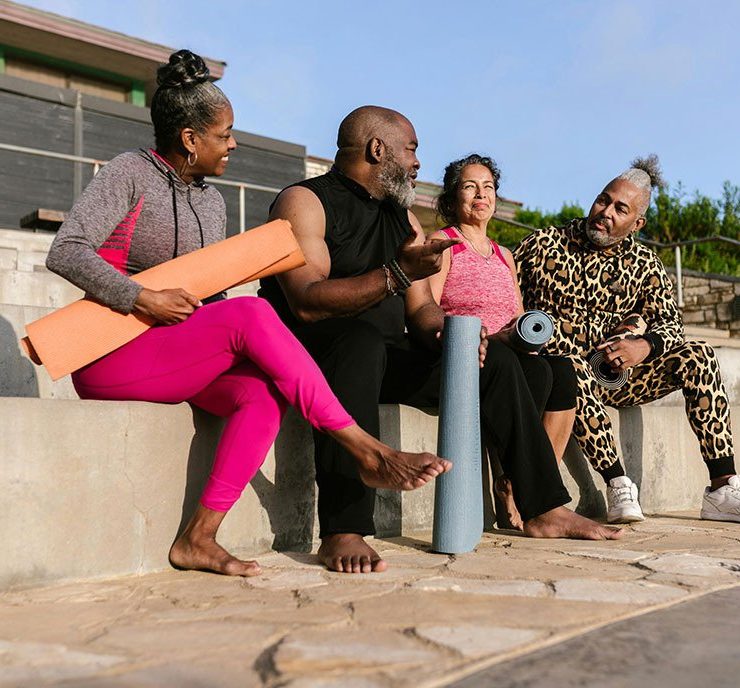Health and Education: Building a Stronger Future Through Knowledge and Well-Being

The connection between health and education is powerful, far-reaching, and often underestimated. While they are usually treated as separate areas of policy and personal development, health and education are deeply interdependent. Good health supports learning, and quality education promotes healthier lifestyles. Together, they form the foundation of human potential, economic progress, and social stability.
As societies face rising challenges such as chronic diseases, mental health crises, and widening educational gaps, the integration of health and education has become more important than ever. Whether in schools, universities, or workplaces, the combination of wellness initiatives and learning opportunities can create healthier, more resilient communities.
The Health-Education Link: Why It Matters
Studies consistently show that education strongly influences health outcomes. People with higher levels of education tend to live longer, make healthier choices, and have greater access to healthcare resources. Education fosters critical thinking, health literacy, and the ability to navigate complex health systems.
On the other side, health directly impacts educational achievement. Children who suffer from malnutrition, chronic illness, or poor mental health often struggle to concentrate, attend classes regularly, or perform academically. Healthy students are more engaged learners, while healthy adults are more productive workers and lifelong learners.
This two-way relationship creates a cycle: better education leads to better health, which in turn supports further learning and development.
Health Education in Schools: Building Habits Early
Schools are one of the most powerful platforms for promoting health. Children spend a large portion of their early lives in classrooms, making schools an ideal environment to teach healthy habits.
Health education programs cover a wide range of topics, including nutrition, physical activity, mental well-being, sexual health, and substance abuse prevention. Beyond theoretical knowledge, schools that incorporate daily physical activity, healthy meal programs, and mental health support create holistic environments where students thrive.
For example, teaching children about the importance of balanced diets and exercise at a young age can reduce the risk of obesity and chronic diseases later in life. Introducing mindfulness and stress management techniques helps children build emotional resilience, which supports both academic success and lifelong mental health.

Higher Education and Health Literacy
Universities and colleges also play a critical role in shaping health awareness. Young adults often face lifestyle transitions that influence their long-term health, such as living independently, managing stress, and making choices about diet, sleep, and exercise.
Health education in higher education settings goes beyond physical well-being. It includes mental health resources, sexual health education, and guidance on managing substance use. University counseling centers and peer-support programs have become vital in addressing the growing prevalence of anxiety and depression among students.
Moreover, higher education institutions are also hubs for health-related research and innovation. They train future healthcare professionals, conduct studies that influence policy, and develop technologies that improve public health systems worldwide.
The Role of Technology in Health Education
Technology has transformed how people learn about health. Digital platforms, mobile apps, and online courses have made health education more accessible than ever.
Students can now use interactive apps to learn about nutrition, track their fitness progress, or practice meditation. Online health portals provide reliable resources on disease prevention, mental health, and healthy living. Tele-education allows healthcare professionals to deliver training remotely, expanding access to health knowledge in underserved regions.
Gamification is another emerging trend—using games and simulations to make health education more engaging. For example, children might learn about the immune system through interactive games, while medical students use virtual reality to simulate surgeries.
By integrating technology into health education, learning becomes more dynamic, personalized, and inclusive.
Mental Health Education: Breaking the Stigma
One of the most critical areas of overlap between health and education is mental health. Despite growing awareness, stigma and misinformation still prevent many people from seeking help. Education is the most effective tool for breaking down these barriers.
Schools that openly discuss stress management, emotional intelligence, and empathy create environments where students feel safe addressing mental health challenges. Similarly, universities that offer workshops, counseling, and peer-support programs foster resilience among young adults facing academic and social pressures.
Public health campaigns also use education to shift perceptions. By teaching communities that mental health is as important as physical health, societies move closer to creating supportive systems where individuals can seek help without fear or shame.
Global Perspectives: Health and Education Inequality
While the benefits of health and education are universal, access to both is far from equal. In many developing countries, children face barriers such as malnutrition, lack of clean water, and limited access to schools. These obstacles create cycles of poverty where poor health prevents education, and lack of education perpetuates poor health outcomes.
International organizations like UNICEF, WHO, and UNESCO are working to close these gaps through integrated health and education programs. School feeding programs, vaccination campaigns, and community health initiatives are examples of how addressing health and education together can lift entire communities out of poverty.
Equity is also a concern in wealthier nations. Low-income communities often have limited access to quality education and healthcare, leading to disparities in both academic performance and health outcomes. Bridging these gaps requires policy interventions that prioritize vulnerable populations and ensure that every child, regardless of background, has the opportunity to grow healthy and educated.
Lifelong Learning and Workplace Health Education
Education does not stop at graduation. In today’s fast-changing world, lifelong learning is essential—not just for career growth, but also for health. Adults benefit from continued education about topics such as nutrition, stress management, financial wellness, and preventive care.
Workplaces are increasingly recognizing the value of health education for employees. Wellness programs, fitness challenges, and seminars on topics such as mental health and ergonomics help employees stay healthier and more engaged. Healthy workers are more productive, miss fewer days due to illness, and contribute more positively to organizational culture.
The Future of Health and Education Integration
Looking ahead, the integration of health and education will only grow stronger. Schools will increasingly function as centers of community health, offering not just academic knowledge but also medical screenings, nutrition programs, and mental health support. Universities will expand their role in global health research and policy development.
Digital platforms will continue to revolutionize learning, making health education more interactive and widely available. Personalized learning, supported by artificial intelligence, could tailor health education to individual needs, whether for a child learning about exercise or an adult managing a chronic condition.
Most importantly, societies will begin to view health and education not as separate investments, but as two sides of the same coin—both essential to human development and societal progress.

Conclusion
Health and education are the twin pillars of a prosperous future. Together, they shape individuals’ abilities to learn, grow, and thrive. A strong education equips people with the knowledge to make healthy decisions, while good health provides the foundation for effective learning.
By investing in integrated health and education systems, societies can break cycles of poverty, reduce inequality, and build resilient populations ready to face the challenges of tomorrow. The future lies in recognizing that knowledge and well-being are inseparable—and that by nurturing both, we unlock the full potential of individuals and communities alike.


